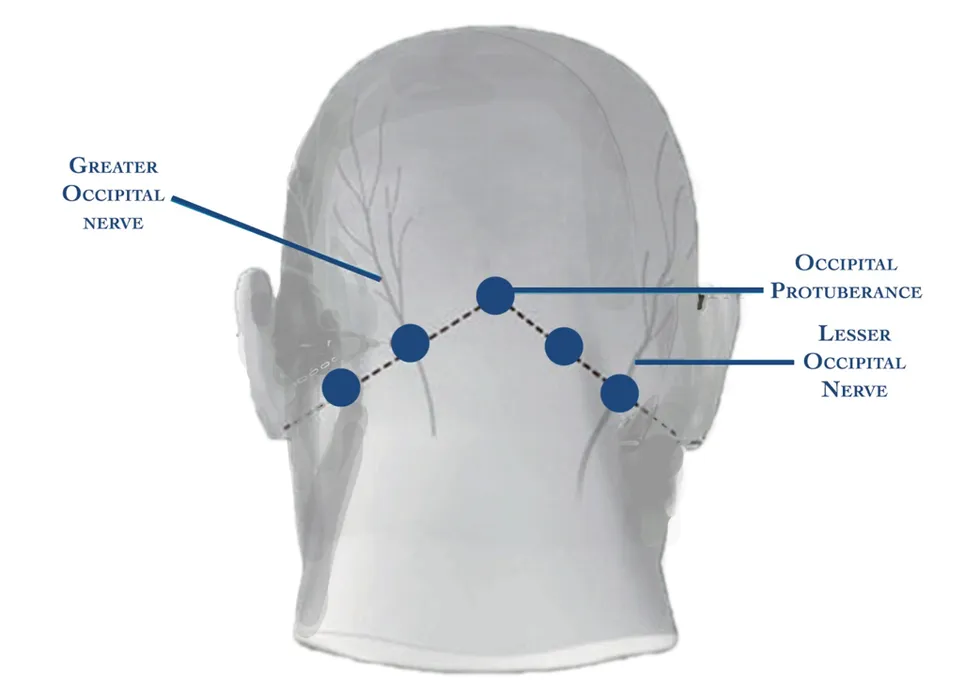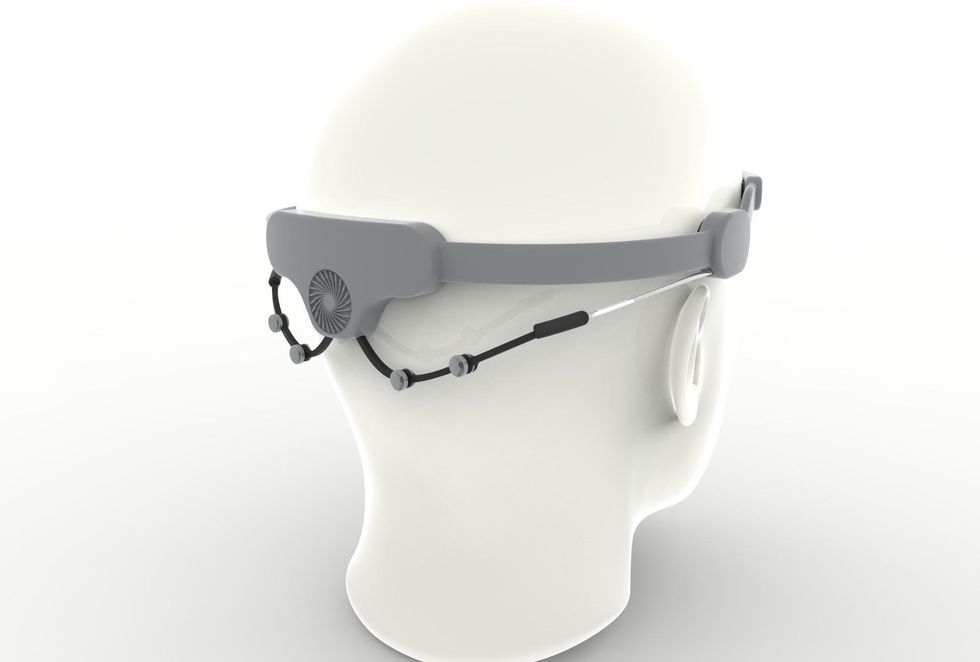Brittany Barreto, Ph.D., is a podcaster, an entrepreneur, and a molecular and human geneticist. (In other words, she’s really smart.) Read her column here each month to learn about what’s happening in the world of technology and innovation in women’s health.
The last time Jenny had a migraine attack, she had a much different experience than she was used to having. She had relief from the pain, but she didn’t feel drugged or nauseated. She was able to drive herself home, and she was excited that she didn’t have to miss her daughter’s soccer game that evening or her father’s doctor’s appointment in the morning.
In the past, after seeking treatment for a migraine attack, she was sent home on medication that kept her from being able to show up for her family and responsibilities. This time, though, Jenny’s physician used OcciGuide, a medical device that has recently come on the market after years of development and clinical trials. The device treats headache and migraine attacks without the negative side effects that can happen if you take opioids or other strong pain medication.
Headache, migraine and cluster attacks are the fourth most common reason for visits to the emergency department. And migraine disease affects more women than men. In fact, about 3 out of 4 people who have migraine disease are women. And research shows that women have more and longer migraine attacks than men.
Changes in hormones such as the drop in estrogen before menstruation or fluctuations during perimenopause can lead to an increase in headache and migraine attacks. As many as 6 out of 10 women report having menstrual migraine attacks.
One of the most common treatments for migraine disease is pain medicine. Unfortunately, though, some of the pain medications can be addictive and overuse can lead to rebound headache attacks. Additionally, many pain medications such as opioids and over the counter pain medications like aspirin, ibuprofen (Advil, Motrin) and naproxen (Aleve) are either not recommended for use by pregnant women or can only be used in the first two trimesters.
“While managing a pain clinic, I was tired of seeing women being sent home so disoriented. I knew they had things to do, kids to take care of and businesses to run. I wanted to create a tool that allowed all healthcare professionals with any amount of experience to be able to administer the occipital nerve block treatment,” said Jillian Levovitz, co-founder of OcciGuide.
Occipital nerve block treatment is generally safe, does not include narcotics and has no effects on the rest of the body. So why haven’t you heard of it?
Well, not every provider feels comfortable administering it. A small amount of numbing medicine, such as lidocaine, is injected into the occipital nerves in the back of the skull. There are tricks for how healthcare providers (HCPs) can find these nerves, but many prefer to prescribe medicine rather than take the chance of missing the occipital nerve with a needle.

To help make HCPs feel more comfortable giving occipital nerve blocking treatment, Levovitz created OcciGuide, a device that easily guides any HCP to the correct injection points. OcciGuide is a single-use medical device that sort of looks like a strange pair of headphones. It wraps around the back of the patient's head with arms that rest on top of their ears. Two port holes on the back side of the device directly line up with the occipital nerves. This makes injecting the numbing medicine extremely easy and lowers the risk of missing the nerves for the HCP. I imagine it means less stress for the person receiving the shot, too, knowing that the HCP injecting numbing medicine into the back of their head has a map!

In the United States people spend $11 billion a year in direct costs such as medical spending and another $11 billion in indirect costs, like lost productivity, because of headache and migraine disease. Alongside these financial costs are the risks of contributing to opioid addiction. Not only are opioids addictive, but overuse can actually lead to headache and migraine attacks becoming chronic instead of occasional.
Innovators like Jillian are not accepting the status quo when it comes to treating conditions that disproportionately affect women. We want women back on their feet and back to their lives as quickly as possible and with the least amount of side effects. Sometimes to create this kind of change, we just need to build a roadmap.
The information about products and/or services in this column does not constitute any form of endorsement or recommendation by HealthyWomen. Links are provided as a convenience and for informational purposes only. This column may occasionally cover companies in which Brittany Barreto is an investor.
- Don't Lose Hope in Your Battle With Migraine ›
- Most People Who Experience Migraine Are Women: Here’s What You Need to Know ›
- When It's More Than Just a Bad Headache ›
- Fact Facts: Everything You Need to Know About Migraine Disease ›
- How to Know If You’re Experiencing Migraine - HealthyWomen ›
- Migraine Headaches Are a Family Affair - HealthyWomen ›







